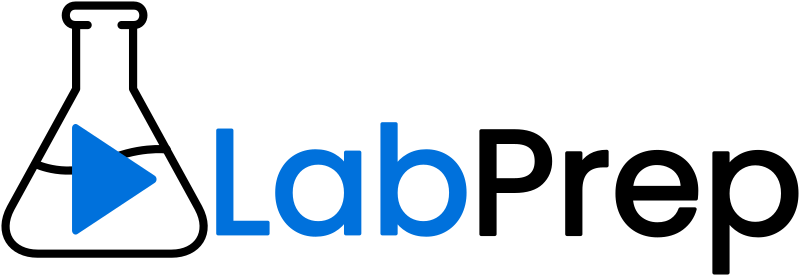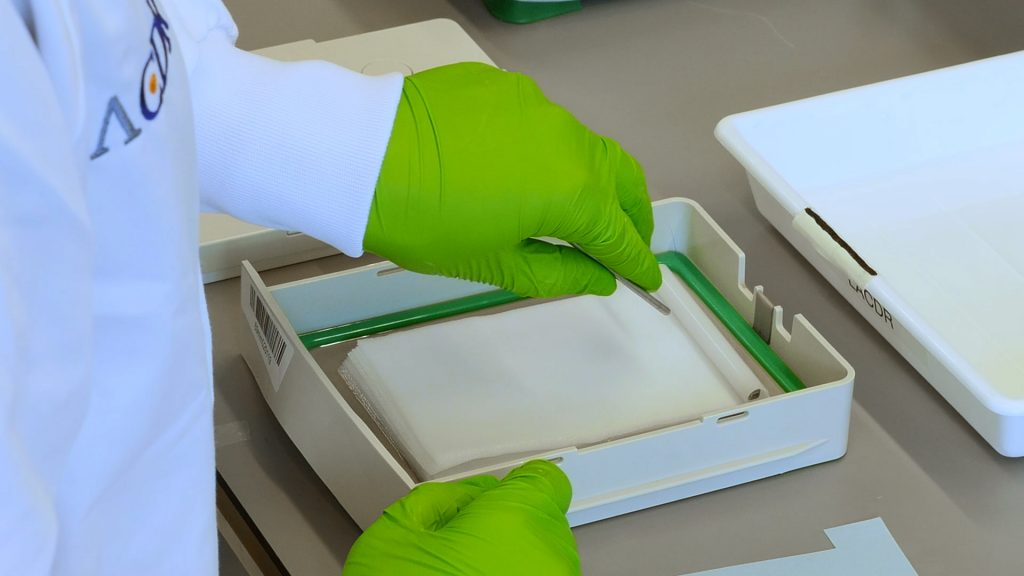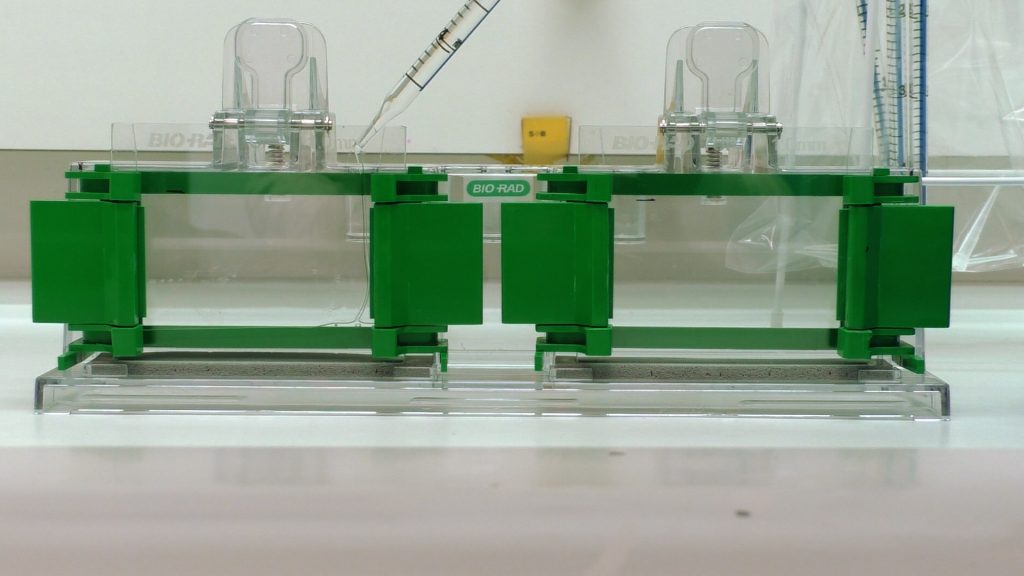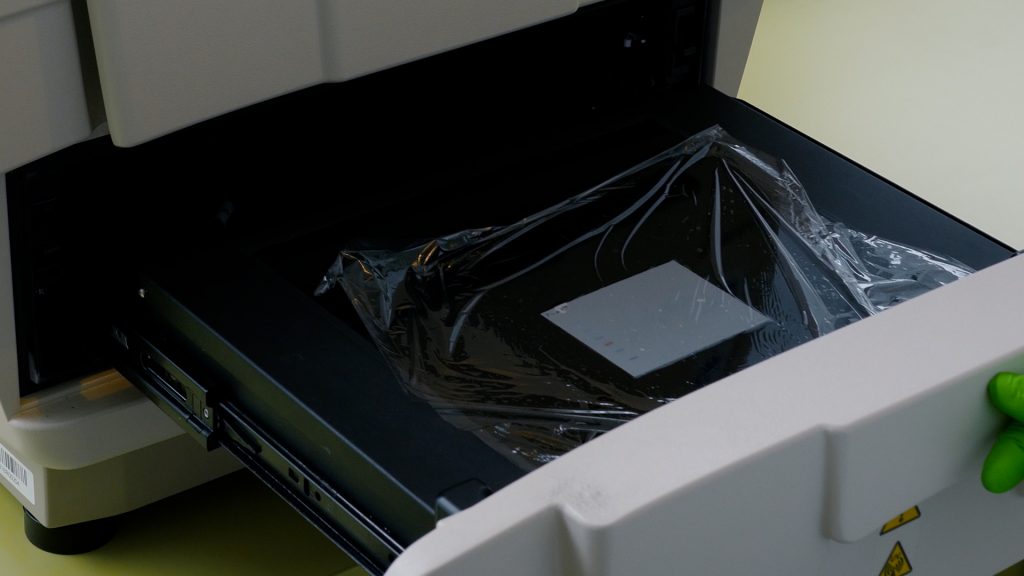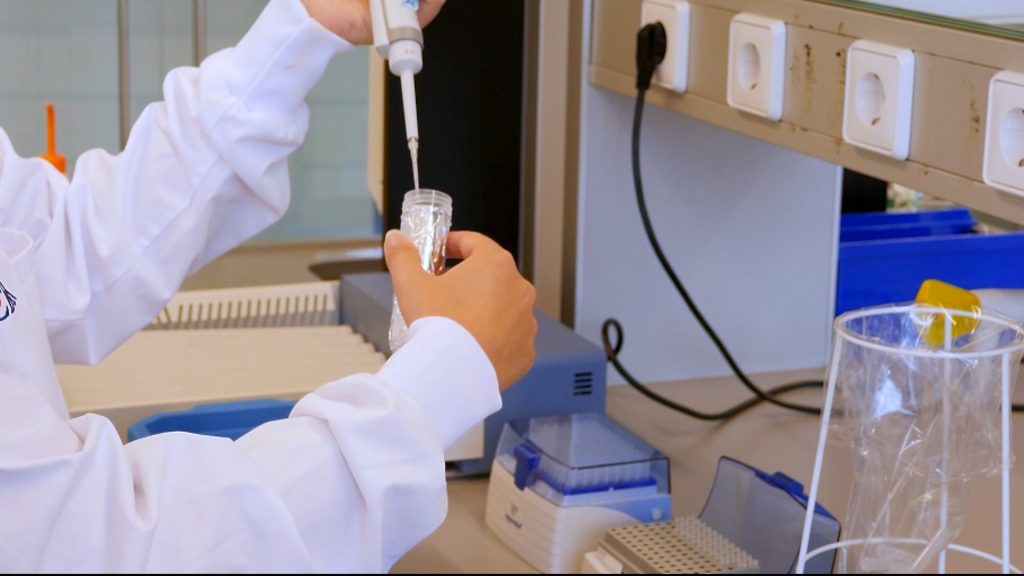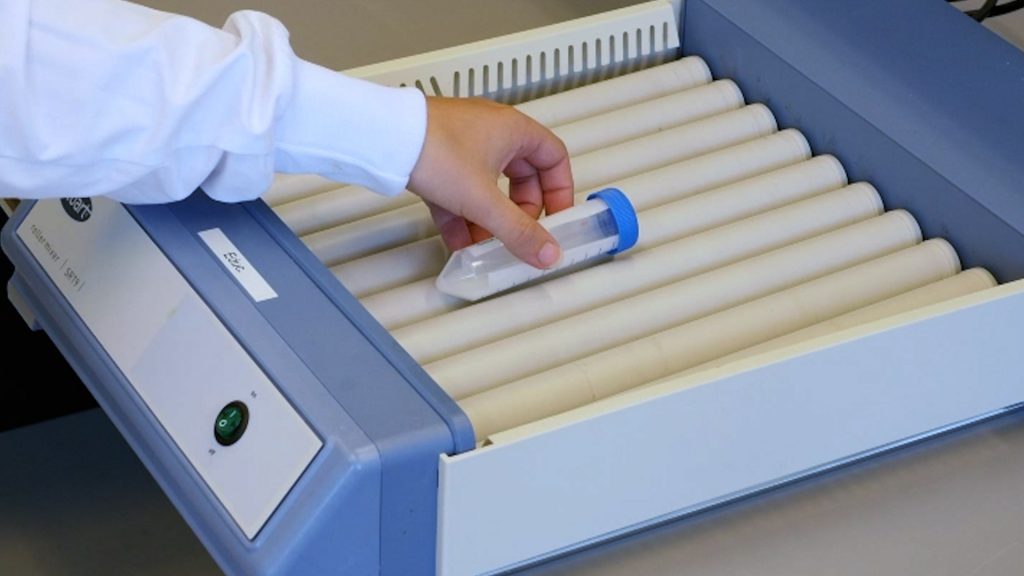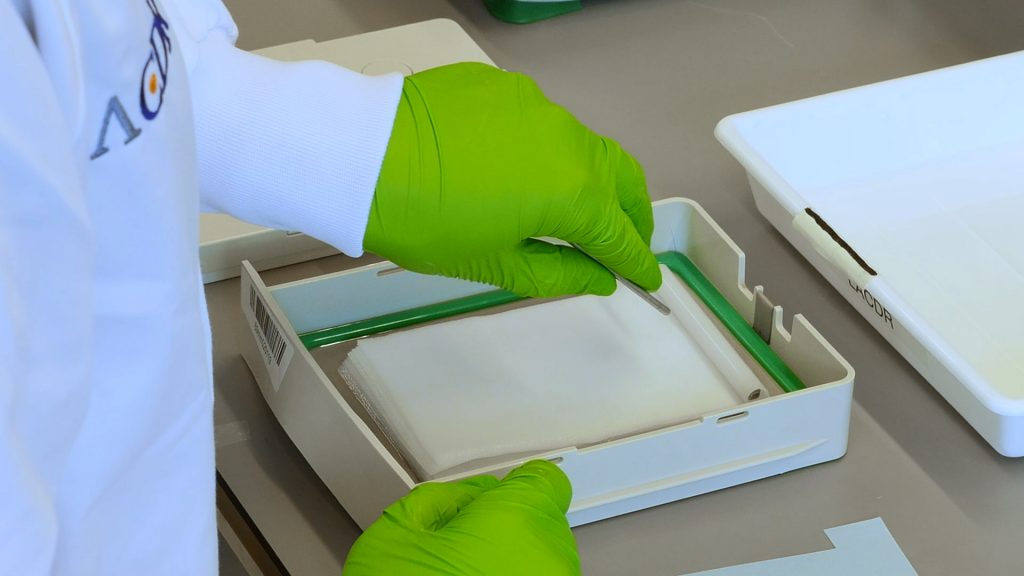Blocking membrane
This video shows how to perform western blot membrane blocking.
- Tineke Bijl
-
(0)
- 0 enrolled students
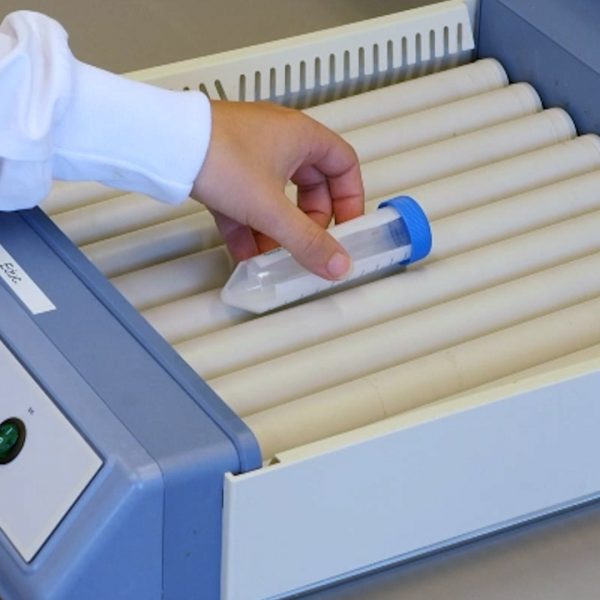
Description
Non-interactive video download link (mp4).
The script that has been used to create the video shown above can be downloaded as excel script file.
1 |
|
2 |
|
Now we have the blocking buffer, we need to transfer the membrane in to a 50 ml tube. What is the correct way to place the PVDF membrane into the tube for blocking?
|
Before we can block our membrane, we need to prepare blocking buffer. We will make 50 ml of blocking buffer. Calculate how many grams of non-fat dry milk we need to add to TBS-T to make a 5% solution. We need ____ g of non-fat dry milk
Correct answer: 2.5 |
De blokbuffer bevat melkpoeder. Waarvoor dient dit?
|
Blocking your membrane is a very important step of Western blotting. But what happens during this step? Wich of the following statements is/are true?
|
Download zip to import in LabBuddy.
Please make sure that your product exists and valid for this course
- Skill levelIntroduction video
- CategoryBiochemistry
Related videos
-
Free
Pouring SDS PAGE gel
-
Free
Blocking membrane
Copyright information
This video is created by Leiden Academic Centre for Drug Research (LACDR), Faculty of Science at Leiden University under a open Creative Commons Attribution-NonCommercial-ShareAlike 4.0 International License. When using this video in its original version please refer to www.labprep.video. When adapting the video, mention the source ‘adapted based on the original version that is created by the labprep.video team’. It is not allowed to use the video for commercial purposes without consultation with the creators. You can contact us via info@labprep.video.
